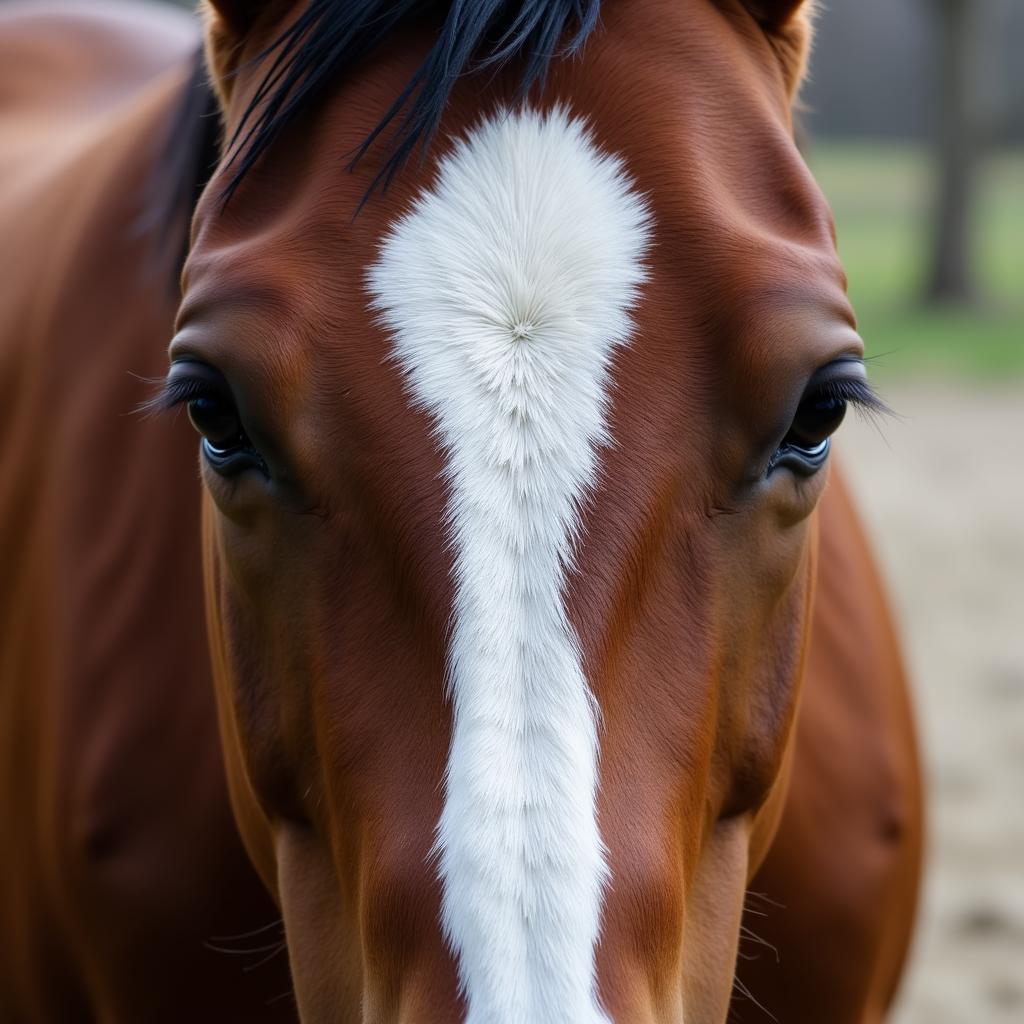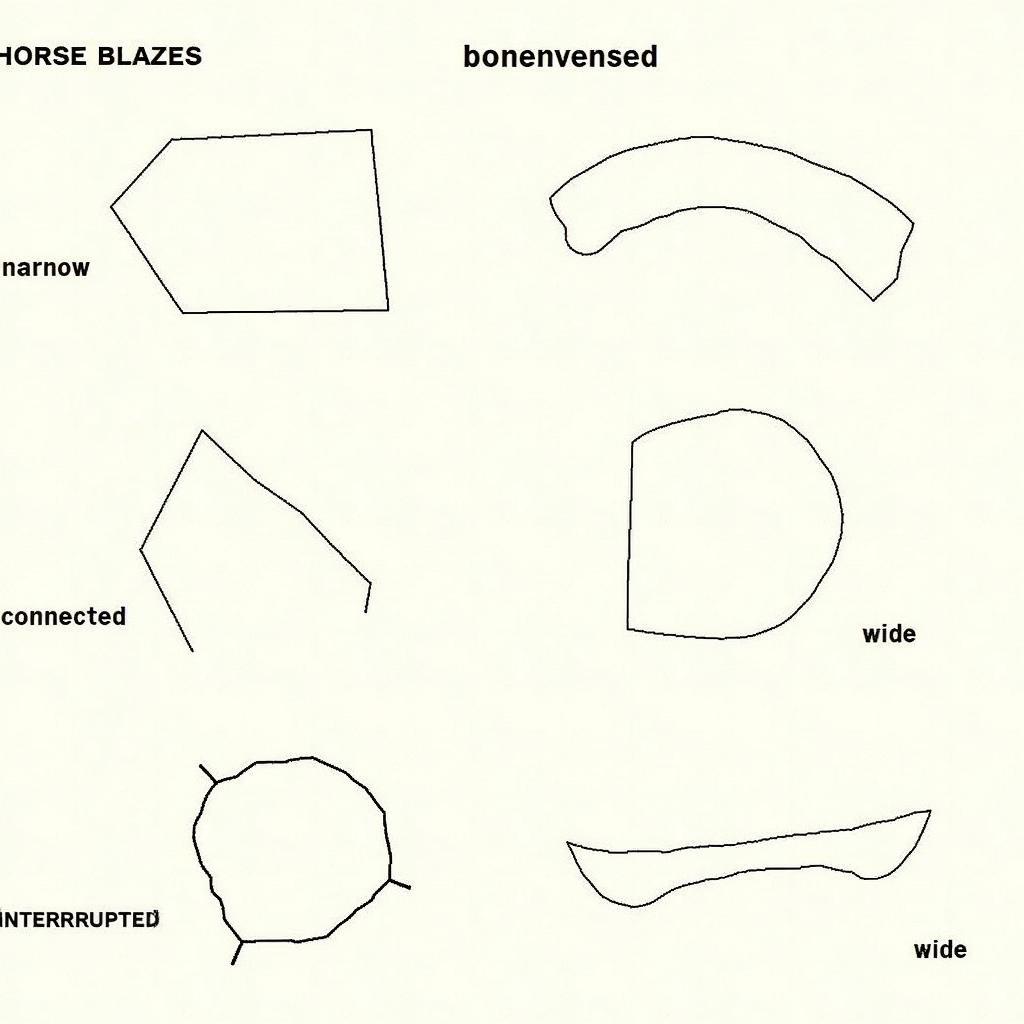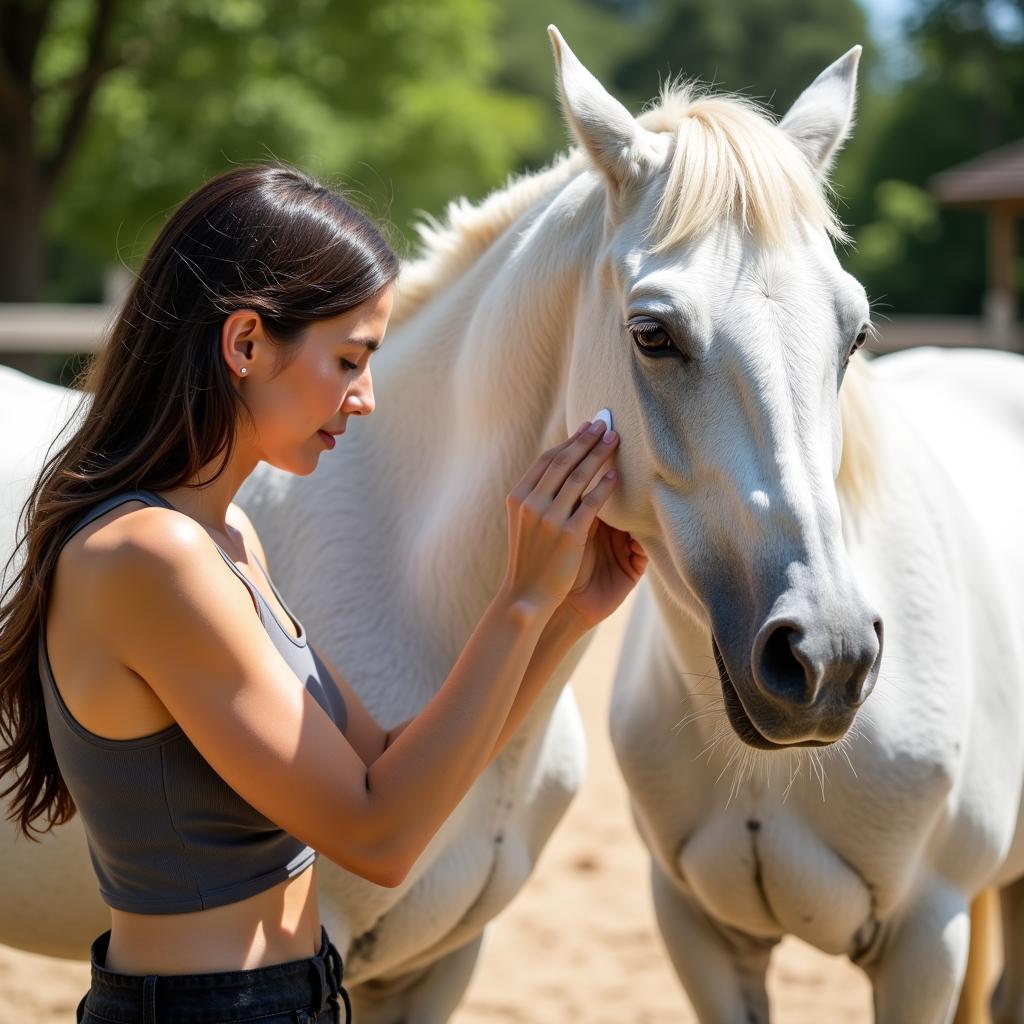The term “Blaze Horse” often sparks confusion among horse enthusiasts. Is it a specific breed, or simply a way to describe a horse’s facial markings? The answer is a bit of both, and understanding the nuances can deepen your appreciation for these majestic creatures. Let’s delve into the world of blaze horses, exploring the characteristics, genetics, and care considerations.
 White Blaze on a Horse Face
White Blaze on a Horse Face
What is a Blaze Horse?
In essence, a blaze horse refers to any horse with a distinctive white marking on its face. This marking, known as a “blaze,” typically runs down the center of the horse’s face, covering the forehead, nasal bone, and sometimes extending to the muzzle. However, blazes can vary significantly in size, shape, and placement.
Some blazes are narrow and well-defined, resembling a white stripe, while others are wide and cover a larger portion of the face. The edges of a blaze can be smooth or irregular, and the white hair may even be interspersed with patches of the horse’s base coat color.
 Different Types of Horse Blazes
Different Types of Horse Blazes
The Genetics of Horse Blazes
Like many other coat colors and patterns in horses, the presence and appearance of a blaze are determined by genetics. While the specifics can get complex, the basic principle involves the interaction of multiple genes that control pigment production and distribution in the horse’s skin and hair.
It’s important to note that a blaze is not a breed-specific trait. Horses of any breed can have a blaze, and the likelihood of inheriting this marking depends on the genetic makeup of both parents.
Caring for a Horse with a Blaze
Caring for a horse with a blaze is no different than caring for any other horse. However, the white hair on their face might require some extra attention, especially during sunny days.
The lack of pigment in white hair makes it more susceptible to sunburn. Therefore, it’s crucial to apply sunscreen specifically designed for horses on the blaze, especially during peak sun hours.
 Protecting Horse Blaze from Sunburn
Protecting Horse Blaze from Sunburn
Blazes and Horse Identification
Blazes play a crucial role in horse identification. Just like human fingerprints, no two horse blazes are exactly alike. Their unique size, shape, and position serve as natural markings that help distinguish one horse from another.
Horse owners, veterinarians, and registration organizations often use blaze descriptions, along with other markings, to accurately identify and record individual horses.
Beyond the Blaze: Other Facial Markings
While the term “blaze horse” highlights a specific type of facial marking, horses can exhibit a wide array of other white markings on their faces. These markings often appear in combination with a blaze, adding to the horse’s unique appearance.
- Star: A small white marking located on the forehead, between the eyes.
- Snip: A white marking between the nostrils.
- Strip: A narrow white marking that runs down the center of the face, but doesn’t extend to the width of a blaze.
- Bald Face: A large white marking that covers most of the horse’s face, including the forehead, eyes, and muzzle.
The Allure of the Blaze Horse
Whether you consider it a breed descriptor or simply a striking facial marking, the blaze horse holds a certain allure. The contrasting white against the horse’s coat color adds an element of elegance and individuality. Perhaps that’s why “blaze horse” continues to captivate horse lovers and fuel curiosity about these magnificent animals.
If you’re considering adding a horse to your family, don’t let the presence or absence of a blaze be the deciding factor. Focus on finding a horse that matches your personality, riding goals, and experience level. And remember, a horse’s true beauty lies not just in its appearance, but also in its spirit, temperament, and the bond you share.
Frequently Asked Questions about Blaze Horses
1. Can a horse’s blaze change color?
While the size and shape of a blaze remain relatively constant throughout a horse’s life, the shade of white may appear to change slightly depending on the season and the horse’s overall coat condition.
2. Are horses with blazes more prone to sunburn?
Yes, the white hair on a horse’s blaze lacks pigment, making it more susceptible to sunburn compared to the pigmented areas of their coat.
3. Do all horses with blazes have blue eyes?
Not necessarily. While some horses with large white facial markings, like a bald face, might have blue eyes due to a genetic link, a blaze alone does not determine eye color.
4. Are blaze horses friendlier?
There is no scientific evidence to suggest that horses with blazes have different temperaments than horses without blazes. Temperament is influenced by a combination of genetics, upbringing, and individual personality.
5. Can you breed specifically for a blaze?
While breeding horses with blazes can increase the chances of producing offspring with blazes, it’s not a guaranteed outcome. The inheritance of coat color and markings is a complex process influenced by multiple genes.
For more insights into horse care, breeds, and equestrian life, explore other informative articles on JustusHorses.com. And if you’re looking for the perfect equestrian-themed gift, check out our collection of set toy horses.
Planning a photoshoot with a horse? Read our tips for capturing stunning images of your equine companion.
Interested in learning about the best dogs for horses? Discover breeds that thrive in a barn environment and form strong bonds with their equine counterparts.
From holiday horses to three stall horse barn designs, JustusHorses.com is your trusted resource for all things equine.
For personalized assistance and expert advice, contact us at Phone Number: 0772127271, Email: [email protected] Or visit us at: QGM2+WX2, Vị Trung, Vị Thuỷ, Hậu Giang, Việt Nam. Our dedicated customer support team is available 24/7 to assist you.